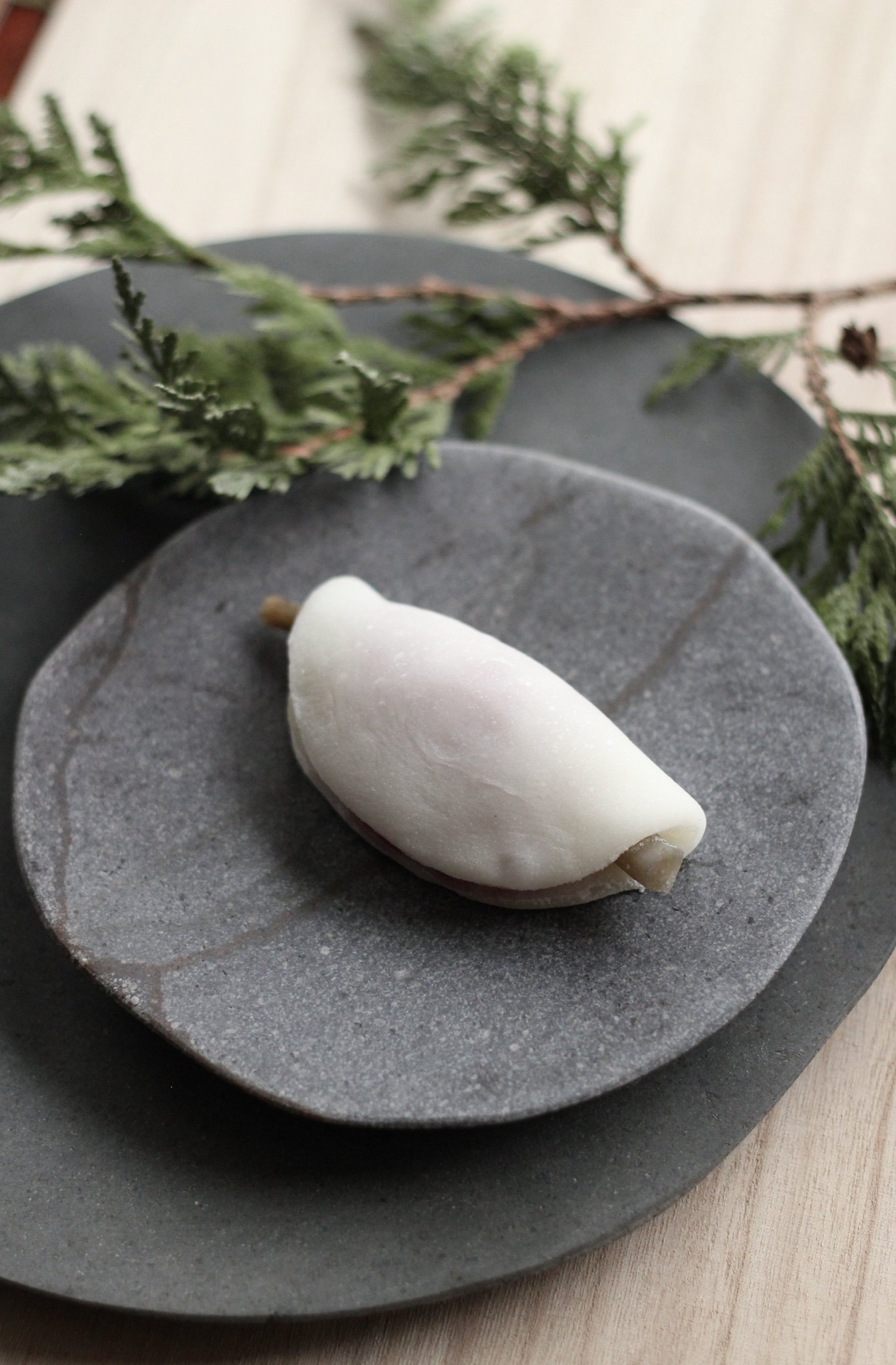
Janurary Wagashi
葩餅 Hanabira flower petal mochi
Another archival image shows how the mochi offering tower is deconstructed on the second day and the 12 smaller flat round mochi are combined with the red hishi* diamond shaped mochi to make little canapés by adding miso and topped them with various items like yam paste, chestnut paste, ayu fish, and burdock.
These are eaten as-is or folded in half to take and eat later. At some point over the years the folded-over version with sweet miso and bean paste with burdock became the preferred version that were given out to the guests of the imperial palace in the new year. Including the tea master who brought it back to enjoy with his first ceremony of the year, (who later received imperial permission to serve it yearly.) The red diamond mochi showing through the translucent white mochi disc is what makes the signature blush colouring of a hanabiramochi.
As with almost every sweet with a long history, there are numerous and contested origin explanation, but I do like this one the best, mostly because the archival diagram of the giant mochi stack that dwarfs the Ise lobster topper. I wish they drew a person in for scale! Maybe next year I will have to try re-creating it!
(The large bottom two mochi have their own little story and a ritual called 鏡開き kagamibiraki which happens on Jan.11th...another long whole post!)
Stay Sweet, Sen
*The “hishi” or diamond shape is based off a leaf of the 菱 “hishi” plant (Trapa japonica or water caltrop) - a sacred plant with edible menacing-looking, wing-shaped seeds that scare away bad omens and grants longevity if you eat them
(A lot of sweets are hishi-shaped that were originally traditional offerings to gods)
Hanabira (flower petal) mochi with sweet simmered organic local burdock root and homemade miso and white bean paste.
A traditional favourite to accompany the 初釜 hatsu-gama (“ first kettle”) the first tea ceremony of the year since 1866 when the 11th tea master of the Urasenkei tea school 玄々斎精中 Gengensaiseichu started his first tea ceremony of the year with the hanabiramochi given to him as an 恩賜 “onshi” imperial gift.
The name sounds straight forward,“ flower petal mochi” perhaps the blush pink hints to spring flowers, with the sweet burdock suggesting a stem?... Nope. I waded through some articles and archives to find the origin of the shape and I finally found an explanation I’m satisfied with! It’s a long post up ahead...
Let’s start with an image from the Kyoto online archives, the official plating diagram for imperial foods of a New-Years 鏡餅 kagami mochi offering done by川端道喜 The house of Kawabatadouki, the official purveyors of mochi and sweets to the Imperial family (est.1503) it’s quite different from the present-day simplified form of two stacked round flat 鏡餅 kagamimochi decorated with a daidai citrus on top.
The archival diagram I found shows a large round white mochi with a round red mochi on top with a stack of 12 white flat mochi, further stacked with 3 stacks of 4 flat, red, 菱 “hishi” diamond shaped mochi, the tower is draped with kelp and seaweed and 16 skewered dried persimmons topped with more mochi and an Ise lobster and surrounded with daidai citrus and fern fronds. On the first day of the year the kagamimochi stack isn’t eaten as it is an offering to the gods.




